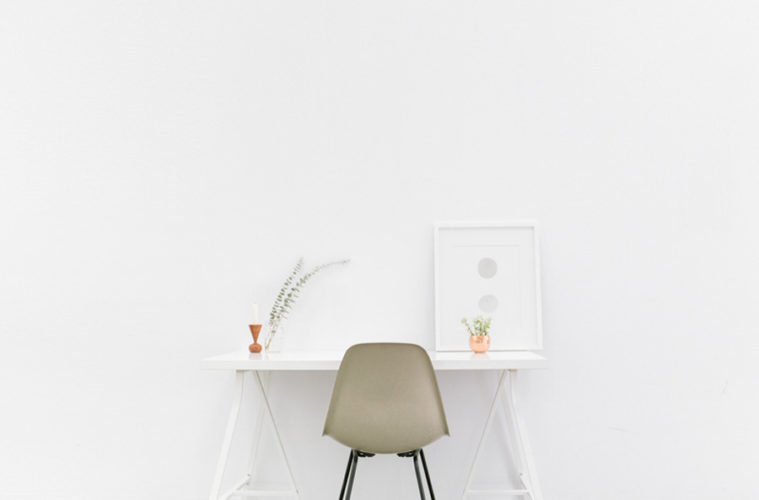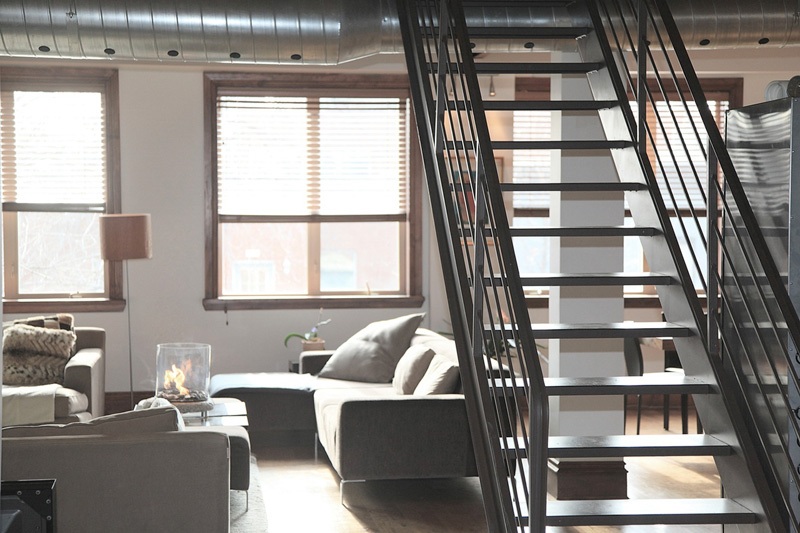Most people, when it comes to the size of properties, have one thing in common: a lack of space. This is especially true in the nation’s capital, London, where space is always at a premium and getting enough of it usually means paying through the nose. However, there are clever ways for those with a small home to make the most of the space they do have.
The Colour Palette
The colour and pattern of a home’s walls go a long way to making a space seem smaller or larger than it actually is. For example, dark colours, such as navy blues, deep reds and dark greens, will “close” a room in and make it feel small, whereas lighter colours, such as creams, whites, sky blues and pale pinks, will “open” a room up and create a feeling of airiness. However, this does not mean that all rooms have to be neutrally coloured. Rather, it means that combinations of colours can be used to create different effects. A room could have three of its four walls painted in a light colour, leaving the fourth wall free to become the focal point of the room, with either a different, darker colour paint or even a patterned wallpaper.
Window Dressings
How windows are dressed will also make a huge difference to how big a room appears. Heavy window dressings will give a room a feeling of heaviness, so if curtains are preferred for a small space, hang them from as close to the ceiling as possible and extend the track or pole around four inches beyond the edge of the windows. Both these tricks will make a room seem taller and wider. Also, do not accessorise curtains with heavy pelmets or tie backs, as these will just add to the “visual weight.” A better alternative for small rooms is to have something more minimalist at the windows to add privacy and block light. Roller blinds are an inexpensive option, with Venetian or Roman blinds raising the cost a little. However, for an on-trend and highly functional window dressing, made to measure shutters are the best choice. These fit snugly against the window frame and can be opened or closed according to desire. They are also a good choice for those who are keen to keep their energy bills low, because as they fit so close to the window, shutters help to keep warm air inside the room rather than bleeding out through cracks.
Designer Tricks
There are tricks that one can employ to make small spaces appear larger. The first is the placement of a large mirror, ideally on the room’s main wall, opposite the window. Placing a mirror here will reflect the light coming in through the window and give the room the impression of depth, as well as providing greater illumination, and it is a trick that can be used in every room in the home. A mirrored splashback is a great choice for a small or narrow kitchen, for example. Regarding illumination, it is common for rooms to have table lamps, but this inevitably means the addition of furniture, which may make the room feel even smaller. An alternative to table lamps is to have wall-mounted lights or sconces, and nowadays these come in a range of styles, from traditional and retro to contemporary.
Clever Furniture
The major drawback of small homes is the lack of storage space, so it is vital that any furniture is put to dual use wherever possible. In the bedroom, for example, a bed with inbuilt storage space, either in the form of drawers in a divan base or as an ottoman bed that lifts up, will provide plenty of room for items that are not needed all that often. In the living room, replace a coffee table with a large footstool that lifts up to provide a big storage space that is perfect for DVDs, remote controls and magazines. Also, do not ignore the opportunities provided by walls. There are desks that can be mounted on the wall and which flip down when required that will open up the small space by not taking up room on the floor, as well as clocks that open up to reveal storage compartments. If a table and chairs take up too much floor space in the kitchen, consider replacing some of the chairs with built-in seating, which can also do double duty as a storage space.
Having a small home need not mean having to live small. With some clever decorating techniques and an investment in dual-purpose furniture, a person can easily make a small home feel a whole lot bigger.



